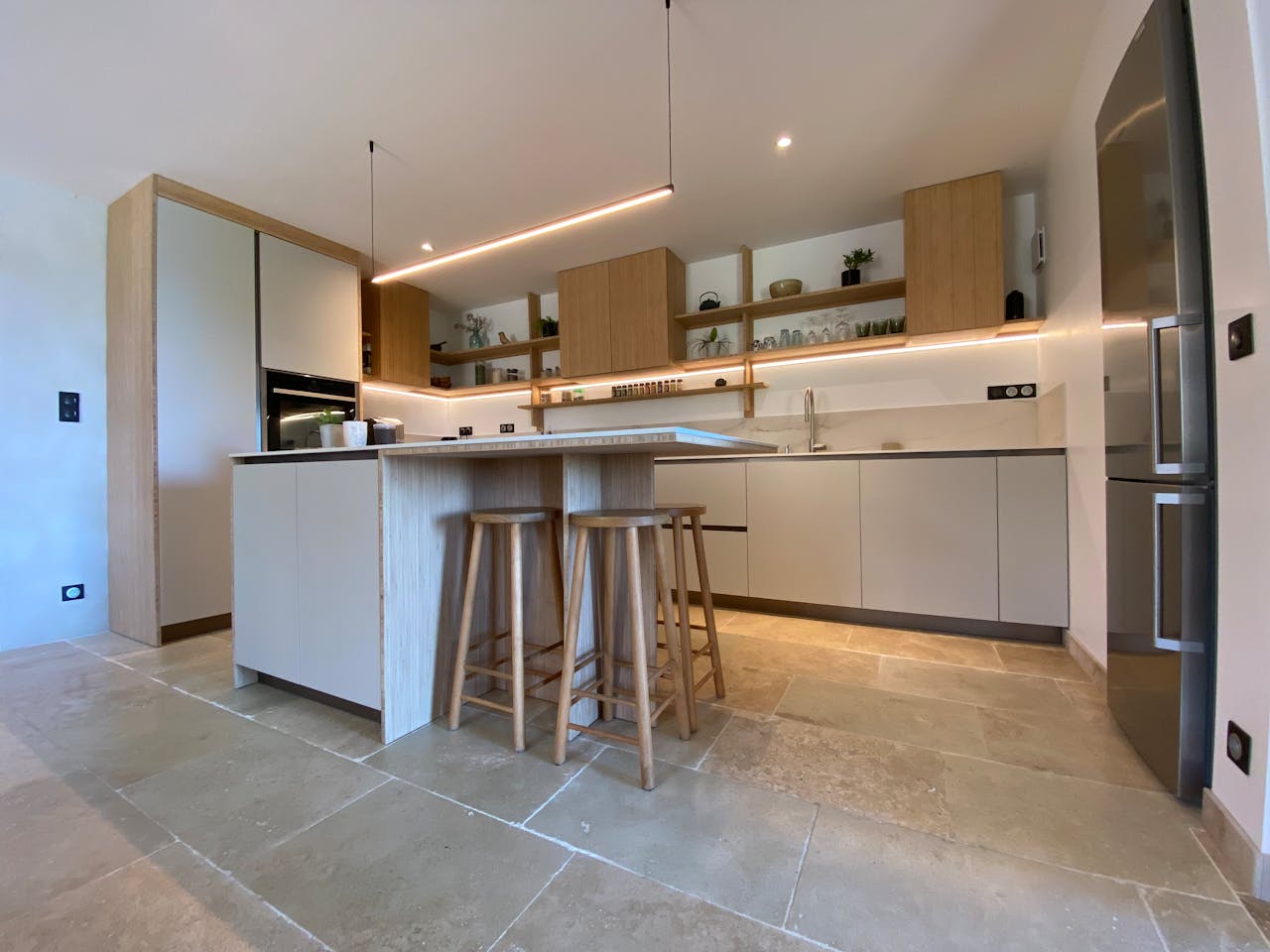“Constantly probe the people who report to you, and encourage them to probe you.”
Expertise in the kitchen and bath design industry is a meeting between skill, knowledge, and relationships. The latter is so important that it defines how to win jobs, client loyalty, and how independent firms turn into engines for generating wealth.
Successful sales design begins with being part of prospects’ inspiration, which leads them to invest in home remodeling projects. Products and services are sold less frequently than they are chosen by attraction.
The once or twice-in-a-lifetime experience of remodeling a kitchen creates a bond between clients and sales designers both parties will likely always remember. This bond will be especially impactful to the homeowner who ordered the remodel. When the investment is a winning experience for the client, they will be singing the praises of the design firm to admirers of their kitchen for the rest of their lives.
Be a leader in vulnerability
What sets your firm apart from the competition?
Empathetic leading is a notion that takes the golden rule a step further. Through empathetic leading, the sales designer treats the customer as they would want to be treated and puts themselves in their shoes to see the potential investment through their eyes.
Let’s identify the most significant areas of sales designers’ methodology to win clients out of prospects and enjoy the sustained success that comes from delivering on commitments and building a loyal clientele base.
Being a leader in vulnerability means spearheading winning ideas from which the prospect can choose.
- Create and cultivate – an atmosphere of experience, skill, and service with colleagues
- Lead the way – by shaping the narrative through prospects’ interests and leveraging industry knowledge and personal service – always putting the prospect’s and client’s needs first
- Actively listen – to understand why and where to pivot the conversation in service of your prospects’ remodeling aspirations to win their trust
- Budget transparently – to build prospects’ interest, empowerment, and trust
- Play into team strengths – so everybody gets better at what they do to sharpen overall service
- Pivot – at the wants and needs of prospects and clientele
Consider two approaches to interacting with prospects in a showroom.
- Leading with products and services
- Leading by listening to the prospect
There’s no doubt homeowners in the market to remodel their kitchens want to learn about the products and services a firm offers or discuss their ideas for their project.
While leading with products and services is a way to demonstrate the strengths of your firm’s team, empathetic leading goes for the root by seeking to understand the intricacies of what the prospect wants to do in their home and why.
The key demonstrating empathetic leadership is to actively listen to what the other person is saying. Listening with eye contact and uncrossed arms are indicators of concern. Asking the other person if they have more to share, rather than providing a solution immediately, is another indicator of empathy.
Empathetic leadership seeks to fully understand the prospect’s motivations. It has the power to culminate in a more meaningful relationship with the prospect and incentive them to become a client of your firm.
Empathy earns trust by positioning the sales designer as a greater value to prospects. It very often leads to a retainer in a much shorter period.
Putting the puzzle together: Show prospects the end at the start
The kitchen and bath industry is an enigma in the United States. Products and services are less known in the US than Europe because they are less widely advertised.
Prospects may enter the showroom knowing exactly what they want and have a solid understanding of how the design process will work, or they may have only a few ideas in mind and need help to turn them into a finished design. However, virtually no customers will enter a showroom with a deep knowledge of the process unless they’re industry insiders.
Show prospects what the end result looks like at the start of the journey. Sales design teams have the opportunity to automate the design process from inquiry to installation confidently and effectively. Whatever experience and expectations prospects bring into your showroom – they’re excited about their remodeling plans – and they’ll be ecstatic if you show them the result in their first consultation.
Their excitement can quickly or slowly turn to anxiety if they are not able to get the design or products they want or if something goes wrong with the installation. Sales designers are prepared for this, and the best sales designers are proactive about keeping anxiety low to nonexistent throughout their customer’s experience – starting from the beginning.
Both sides have expectations about what to expect during the remodel. While the homeowner will naturally make inquiries, they may need to consider the tactical end of the process.
The sales designer is responsible for being upfront about when decisions need to be made, when documents need to be signed, by what date to pay the retainer, and when follow-up installments are made.
It is incumbent upon the sales designer to lead with vulnerability to eliminate the potential for anxiety to well up in the homeowner.
The selling power behind “tangibilizing” the project investment range
Sales designers need to know their prospects’ shopping habits to curate a winning investment experience for homeowners.
Let’s consider consumer buying styles in three categories.
1. They know what they want.
A young couple enters your showroom knowing they will build a galley kitchen in a 18 x 15 foot space with four skylights, 26-inch Bridgewood raised panel cabinets, and French door access to an adjacent terrace. They brought a design they made on Room Sketcher and photos of their space.
2. They’re familiar with products they like and the measurements of their space.
A couple comes into your showroom, saying they plan to remodel their kitchen soon. They bring a room sketch with measurements and photos.
From seeing their friends’ new kitchens they’ve discovered they like Catlan double stainless workstation sinks and Nobilia shaker-style cabinetry in parakeet green. They were also impressed by a relative’s choice of quartzite countertops and ventilated skylights.
They have a decent idea of the remodeling process from talking with their friends.
3. They’re just looking.
A couple is thinking about remodeling their kitchen at some point in the future. They stopped by your showroom because they thought it would be interesting to pick up some ideas.
As you learn about your prospect’s motivation to remodel, how they want to invest, and what they’re looking for in a finished build, show them what their choices look like in three price points during their first consultation – and do it confidently within an 8% margin of accuracy!
You’ve built trust with prospects by showing realistic numbers in three price ranges created by their selections. You’ve demonstrated empathetic leadership, and the prospect trusts you and feels great about working with your firm.
The best outcome is your firm is retained on the spot. If you don’t get retained, the prospect will take the outstanding experience they had at your showroom and the three Good-Better-Best price points you gave them – and find out if whomever they meet with next lives up to your firm’s excellent standards.
—Brandon Fitzmorris, VP Membership & Sales SEN Design Group
Contact us to reach your revenue goals.
Learn how to master strategic planning, sell more products into every job, leverage industry-specific tech developments, Good-Better-Best selling, and other smart kitchen and bath design implementations at one of SEN University’s esteemed in-person schools and online business courses.


